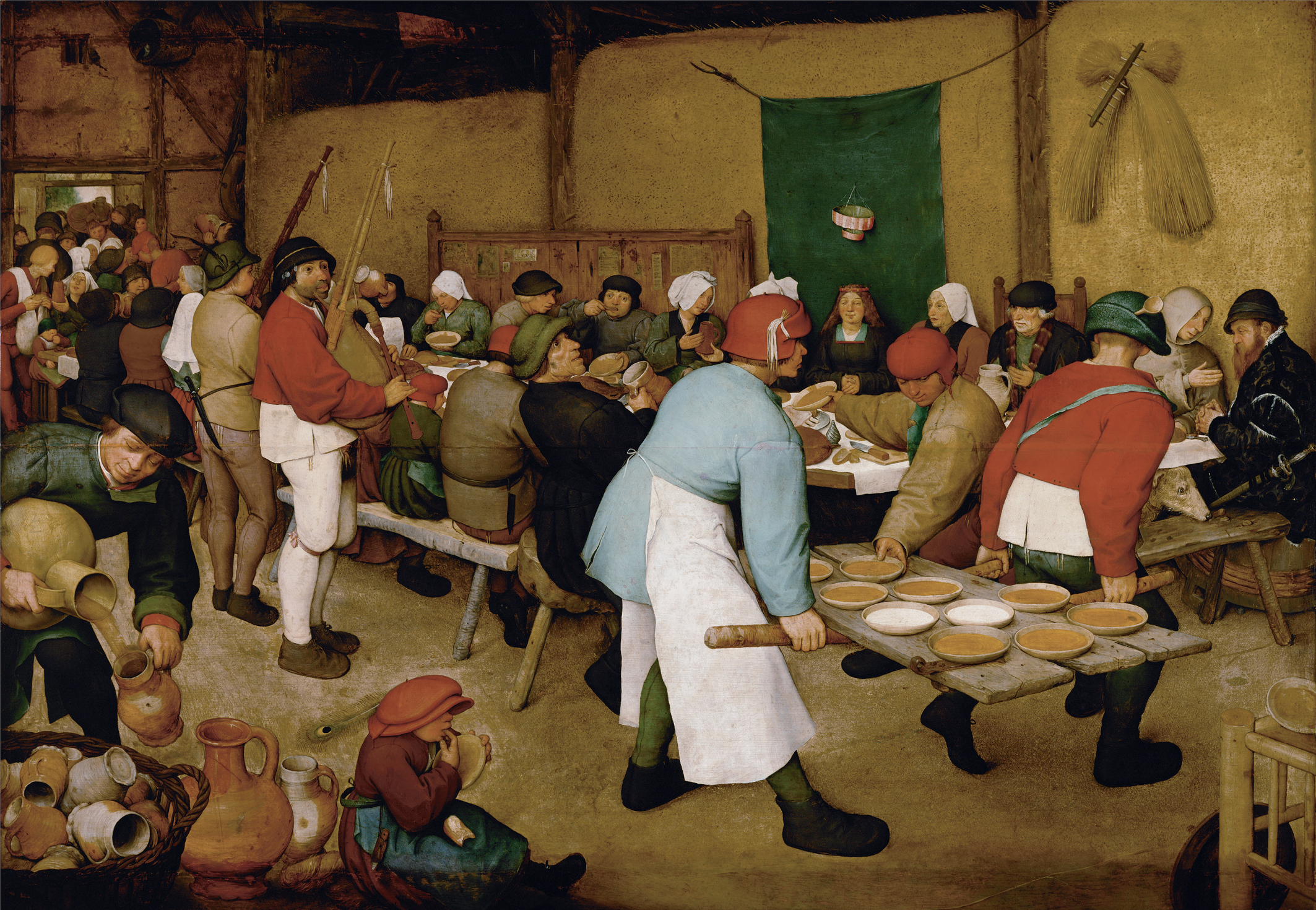Hello there! This month, for the next five Sundays we will present masterpieces from the Kunsthistorisches Museum in Vienna. You must know it is one of the greatest museums in the world, with a magnificent collection and fantastic history. We are so proud they decided to go into partnership with us! :) Enjoy!
Bruegel has created a virtuoso structure in his depiction of a peasant celebration. The long, crowded banquet table creates a diagonal on which all the figures in the composition are oriented. From outside, where it is still daylight, other guests are pressing into the room. One of the bagpipe players draws our attention to the front, where he looks with curiosity at the meager fare that is being served. Two helpers are using a door that has been taken off its hinges to carry their dishes. A server who is pouring beer into more easily handled jugs and a child eating to one side close off the painting at the front.
If we follow the figure at the end of the table who is passing the dishes to the wedding guests, we are led to the true protagonist, the bride. She is sitting silently in front of a length of green cloth, which has been hung along with a paper crown in her honour on the straw wall. According to Flemish custom, the bridegroom was not allowed to attend the celebrations until the evening, and the bride was not permitted either to eat or to speak beforehand.
Unfortunately, nothing is known about the commissioning of this work, which is probably Bruegel’s most famous. If we knew more, it might help to resolve the controversial question of whether the painting is intended to be a caricature, or to carry a moralising message. Bruegel scholars in Vienna agree, however, that most of the interpretative proposals made thus far have failed to reveal the true meaning of the painting. Attempts have been made, for example, to connect the large shoes with the German expression “auf großem Fuß leben” (to live in great style) or to see the bride’s two-piece bridal crown as an indication that she is pregnant. It is far more in keeping with Bruegel’s humanistic conception of himself to see the painting as a neutral observation without further intent. The choice of the subject was nothing decisively new in the history of Dutch graphic art and painting, but never before had it been taken up with such compositional and motivic density and from such a benevolent distance.
This year the Kunsthistorisches Museum is celebrating its 125th anniversary; in 1891, Emperor Franz Joseph formally opened the museum. You can see today's Breugel at the “Celebration!” exhibition.




The Peasant Wedding
oil on wood • 113 cm × 164 cm
 Pieter Bruegel the Elder
Pieter Bruegel the Elder